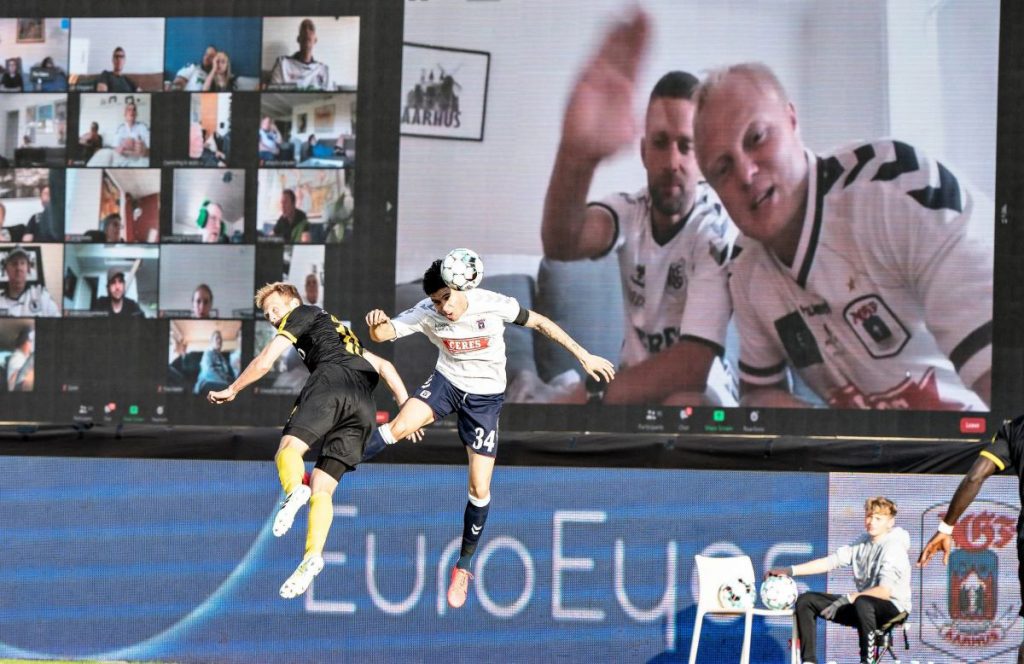Future Tech Review #10: Technology fixes for a new normal
We want a lot—a vaccine for the virus, a way to return to work, and, yeah, something to cheer about
Amid various predictions of what the post-COVID-19 environment will be, Google CEO Sundar Pichai’s view stood apart for its clarity and scope. “The world will not look the same,” he told ZDNet’s Larry Dignan. “We’ll see a long-term acceleration of movement from business to digital services, including increased online work, education, medicine, shopping, and entertainment. These changes will be significant and lasting.”
Creative minds love a challenge as much as nature abhors a vacuum, so it makes sense that researchers and others in the science and technology sectors would ramp up their work on potential solutions for a world in crisis. As a result, we’re likely to see not just new technologies, but also a rise in interest in existing tools and systems that could enable us to thrive in a world we haven’t known before. The rapid ascendancy of Zoom—which went from initial public offering in 2019 to cultural ubiquity in 2020—is just one example of a technology being a perfect fit for the times.

Frozen molecules yield vital clues in the race for a vaccine
Like Zoom, cryo-electron microscopy (cryo-EM) has been around for a few years. In 2016, Nature Methods named it “method of the year” for its unique approach to mapping the structure of proteins and other key biological molecules. In cryo-EM, molecules are flash frozen in liquid nitrogen and then bombarded with electrons, enabling their images to be captured with a special camera. This approach to modelling enables researchers to solve complex structures in just days—a critical time advantage when examining things like the 3D structure of the proteins on SARS-COV-2 and how they interact with human proteins.
Cryo-EM lies at the root of many of the advances made so far. For example, a research team at Shanghai Tech University used it to map the atomic structure of the novel coronavirus’s polymerase to understand how it would interact with Remdesivir, the drug developed by Gilead Sciences that had positive results for treating ebola.
As outlined in a blog post by the National Institutes of Health, the model of how Remdesivir binds to the polymerase will allow researchers to manipulate the structure of the drug and optimize its ability to disrupt viral replication.
Researchers are also applying artificial intelligence to Cryo-EM data sets. They’ve used convolutional neural networks—like the open-source COVID-Net, a joint venture of the University of Waterloo’s Vision and Image Processing Lab and DarwinAI— to help radiologists predict and detect COVID-19 using chest images. Well-documented datasets resulting from this work are essential for training deep neural networks, like Google’s DeepMind project, to understand the interaction of drugs and the coronavirus.

Data before shovels
For many, the stress around returning to the workplace can’t be alleviated by the promise of plexiglass partitions and masks. In many situations those types of precautions aren’t even practical.
Consider large infrastructure projects, traditionally the focus of governments looking to jumpstart an economic renewal and spur on investment and employment. Close collaboration—essential in any large project—is discouraged, and the thought of personnel swarming over a bridge or building without careful planning is anathema to public health authorities.
One technology, building information modelling (BIM), is already showing promising results in changing the way major construction projects come together; some companies are pairing BIM with virtual reality (VR) to revolutionize the planning process.
PARIC, a major US mid-western construction firm with headquarters in St. Louis, is pioneering the use of VR to streamline workflows and share planning tasks among the various teams working on major projects. According to a report in Autodesk’s Connect & Construct, in collaboration with InsiteVR and Autodesk’s BIM360, PARIC can improve communication and collaboration by reviewing models in a virtual environment. With one click, teams can access 3D model data via InsiteVR to review models with a VR headset, eliminating the need for screen share or physical mockups, driving efficiencies across construction projects.
The company also uses 2D and 3D reality capture and BIM to create detailed simulations that enable teams to plan logistics and safety considerations helping workers and project owners fully understand the entire construction, without putting a work boot on the site.

Footie returns to a stadium of streams
For Denmark’s Superliga football team, Aarhus AGF, the wait had been long enough. After 80 days of not laying foot to ball, the team returned to face rival Randers FC at its home pitch, Ceres Park. The Aarhus Park can accommodate close to 20,000 fans, but for this much-anticipated match the spectators attended only by Zoom. The football club worked with the California-based videoconferencing company to project the images of small groups of fans onto giant video screens set up inside the stadium.
According to a report of the game by the New York Times, some 10,000 fans participated, pre-booking virtual tickets in order to be displayed from the area of the stands where they normally sit for games. Fans also had the added benefit of being able to watch fellow supporters during the match, including unruly participants. Following the match, both AGF and Zoom reported receiving inquiries from other sports organizations about the virtual match.
Another example of the current pandemic accelerating a trend already in motion. Stadium ticket sales have been stagnating over the last few years, with high prices and fans who are happier to watch from their comfortable couches on big-screen TVs. Owners have been rethinking sports for a future based on digital imaging and a virtual experience. That means a more personalized experience, with multiple perspectives, selectable commentary, and more targeted advertising. Expect to see 360-degree VR experiences, all kinds of sensors on the athletes, and sophisticated apps to tie it all together.
There will be significant spending around this, from hardware computing and imaging upgrades to the expensive process of combining the data silos that sports organizations own and manage. But these investments will pay off far beyond the current crisis, with a more engaging experience for many more of us.
All the Unusual Suspects
Dramatic social and economic changes force us to reconsider technologies and applications. While technological investment from the fossil fuel or airline industries may fall to all-time lows, sports and education will be heavily investing in systems that were only a novelty a year ago. Watch for similar shifts in your own industry – they’re certainly coming.



 Future Tech Review #8: Computer vision goes mainstream
Future Tech Review #8: Computer vision goes mainstream 